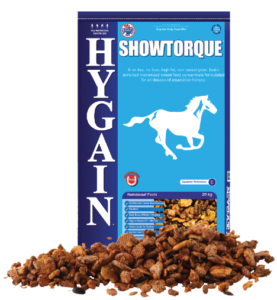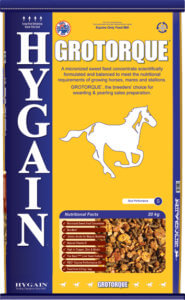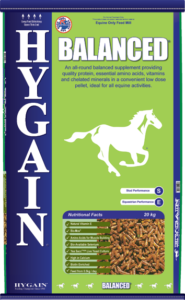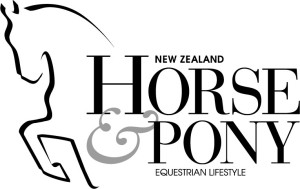
We all want to build the perfect topline in our horses, but first we must understand a topline is. The topline of the horse includes the withers, back, loin (or coupling) and croup; the shape varies greatly from horse to horse and both the length and curvature will vary, with some relationship between the two. The strength of topline and loin muscles influence soundness and athletic ability.
Horses with poor toplines, that are sunken over their withers, concave along the back and loin, or dished around hip bones and hindquarters will have diminished strength in those areas.
There are several factors can contribute to a poor topline, including:
- Age
- Workload
- Pregnancy or lactation
- Lack of or incorrect exercise
- Poor saddle fit
- Diet
It has been a common practice for many years to feed additional calories from fat supplements or grains to try to improve a horse’s topline condition. This is not very successful, as these calories are either used for energy and exercise, or are stored as fat.
Typical fat storage areas in horses are behind the shoulders, over the ribs, neck and around the tail head, but not necessarily over the topline. A horse would have to be fed quite a lot of additional calories for fat to be laid down over the back. We humans wouldn’t expect to eat multiple cream buns with the end goal of developing muscles over our backs and shoulders!
Feeding fat is one of the biggest misconceptions regarding a horse’s topline. A horse’s topline is not made up of fat; it is mostly made of muscle. Since the muscles along the withers, back, loin and croup make up the horse’s topline, losses in this area are actually muscle atrophy.
What can we feed to help build the perfect topline?
Now that we have established that the topline is primarily muscle, the question becomes: what can we feed to develop more muscle in the horse? Since muscle is made up of over 70% protein, building and maintaining muscle in the body requires the correct amount of dietary protein.
When a horse has a poor topline, it is due to diminished muscle mass and this is potentially due to insufficient good quality protein in the diet. Unfortunately though, protein is mistakenly seen in a negative light nutritionally, and often avoided.
Proteins are made up of building blocks called amino acids, and are an essential part of a horse’s diet. Some of the amino acids you may have heard of include lysine, methionine, tryptophan and threonine. These, and other essential amino acids, are linked together in a chain in the body, to form muscle.
Not all protein, however, is created equal – just feeding a higher crude protein feed or hay may have limited results. The quality of the crude protein – in other words, the amount of essential amino acids contained – is what determines the effectiveness of the protein. Diets containing adequate levels of all the essential amino acids can drastically improve an imperfect topline.
Feeding a commercially-prepared concentrate containing high-quality protein sources such as legumes, including soybean and lucerne meal, along with additional individual amino acids, will promote muscle tone and a strong topline.
Products such as HYGAIN GROTORQUE, HYGAIN BALANCED and HYGAIN SHOWTORQUE provide quality levels of essential amino acids to assist muscle development and added vitamins for muscle repair. These high quality protein sources provide essential amino acids in reasonable feeding levels, to allow for proper muscle development.



Exercise
Exercise is vital when trying to develop or improve a horse’s topline. Exercise will condition and train existing muscles, and will help build a topline as long as the nutritional building blocks of muscle are available in the diet. Very often, horses in low-to-moderate work who are also easy keepers (eg. lower level dressage horses or pleasure riding mounts) are fed a diet that is protein/amino acid deficient. These horses have plenty of rib cover, and may even be overweight, but they have a poorly developed topline, especially over the loin, due to protein deficiency.
All Hygain feeds utilise superior protein sources that contain high levels of essential amino acids. Using one of Hygain’s feeds coupled with an appropriate exercise regime will allow your horse to build a superior topline.
Get a free personalised diet analysis for your horse: Fill out the five easy step Hygain Nutrikey form at the link below, and have a nutrition consultant assess your horse’s diet.








